Mary’s Life in Stained Glass (5)

Glen McCullough
The Wedding Feast at Cana
On the third day after Jesus’ baptism, He performed His first miracle at the behest of His mother Mary. I wouldn’t like to speculate as to how Mary knew He could change the water into wine, but who can resist an insistent mother?
I have photographed ten windows showing the miracle, and the artistic licence is obvious. I would expect to see Jesus, Mary, a wedding party, six large stone jars, and a servant pouring water into one of them.
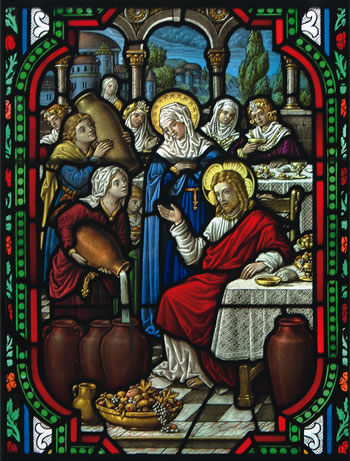
1
The artist who designed the window in Our Lady of the Sacred Heart, Randwick, Sydney (marked [1]) used the most artistic licence. He or she imagined a bacchanalian feast, I think, judging by the bowl of food at Jesus’ feet and the richness of the dress and settings. On the other hand, I can’t imagine Jesus in ringlets, or Mary looking like she is simpering. The jars look authentic, though the servant is looking adoringly at Jesus rather than where he is pouring the water.
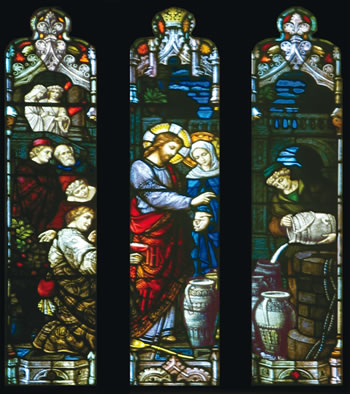
2
A more authentic representation is amongst the “miracle” windows in St Mary of the Angels, Wellington [2]. The scene takes place outside at the well, to show that water is being poured into the jars, with the wedding couple dressed in white looking on at a distance. Of particular interest is Jesus’ left hand, which to me seems to be quitening Mary. Mary looks like a teenager rather than a matron.
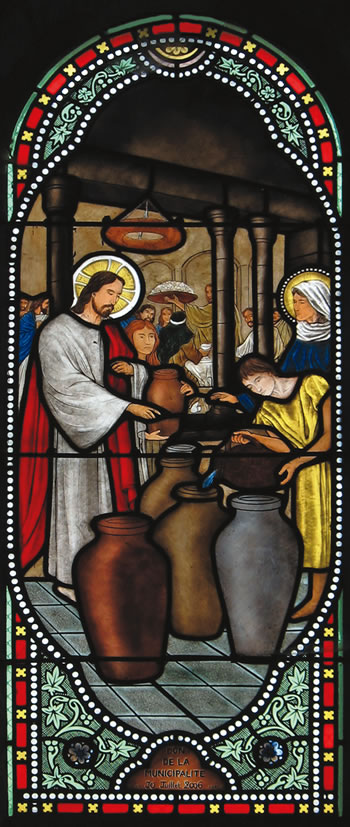
3
The lovely window I saw in the village church at Chavagnac, France [3] shows much more painted glass than is normal, and so looks more like a painting than a stained glass window. The scene looks authentic to me, and Mary as you would expect to see her. The window is very recent, the inscription is dated 2006.
Another French window, from St Alban’s, Pleneuf Val-Andre [4], shows everyone gathered around the top table at the wedding, looking on. Mary looks as if she has only a passing interest in what is happening. The one small jar won’t go very far! But the colours are stunning.
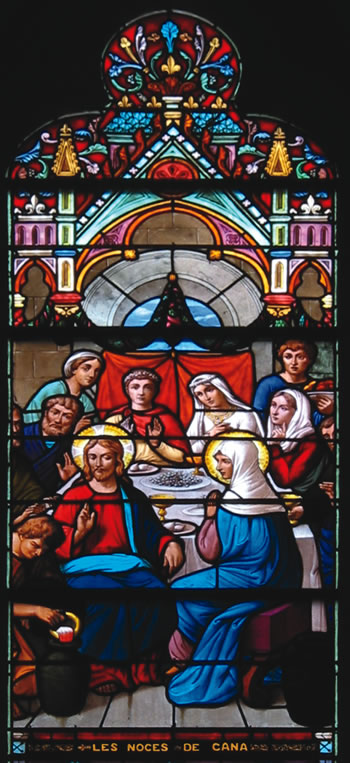
4
Crucifixion
The first windows I have seen featuring Mary after Cana are three that feature her meeting Jesus on His way to Calvary.They are from St Mary of the Angels, Wellington [5], Our Lady of the Sacred Heart, Randwick, Sydney [6] and St Patrick’s Catholic Cathedral, Armagh, Northern Ireland [7]. They are all quite graphic, with [5] being particulary poignant. I did think the curly hair in [6] was taking artistic licence a bit too far.

5
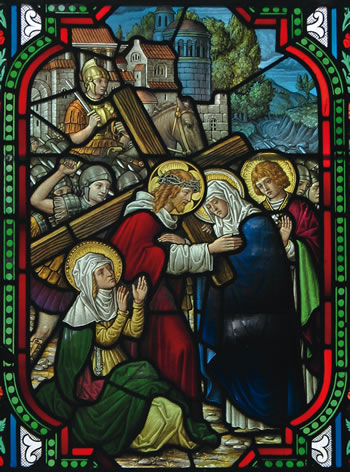
6
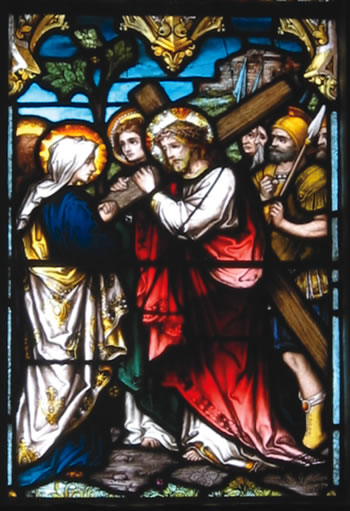
7
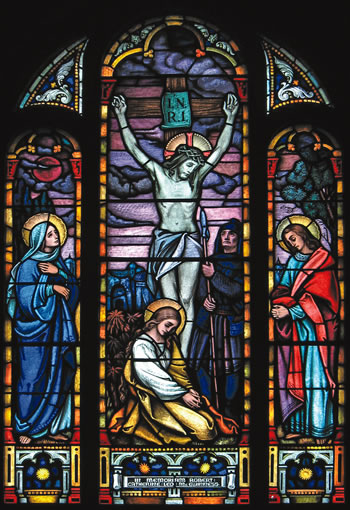
8
John records Jesus' famous words “Woman, behold, your son!” and
“Behold, your mother!” which have been taken to mean that Mary is the Mother of the Church. Most churches that have lots of stained glass usually feature a crucifixion window, and frequently they feature Mary and John at the foot of the cross. Sometimes there is a second woman, which I take to be Mary Magdalene. By far the best example I have seen was in St Mary's, Banff, Alberta, Canada; [8] closely followed by the one in a side chapel of St Mary of the Angels, Wellington [9]. They very adequately portray the feelings of Mary and John as I imagine them to be.

9

10
After the Crucifixion
After the crucifixion, John did as Jesus had instructed, because his gospel (John 19:27) said that he took Mary into his own home. The window in St Barnabas, Fendalton, Christchurch [10] (which was photographed in 2002) perfectly expresses this. I can see that John is leading Mary by the hand, and is obviously treating her as a son would his mother.
The only mention of Mary in Scripture after the crucifixion is in Acts 1:14, which states that Mary the mother of Jesus met and prayed with the apostles. So she would have been in the upper room with the disciples at Pentecost.
But that is for next month.
 Entries(RSS)
Entries(RSS)